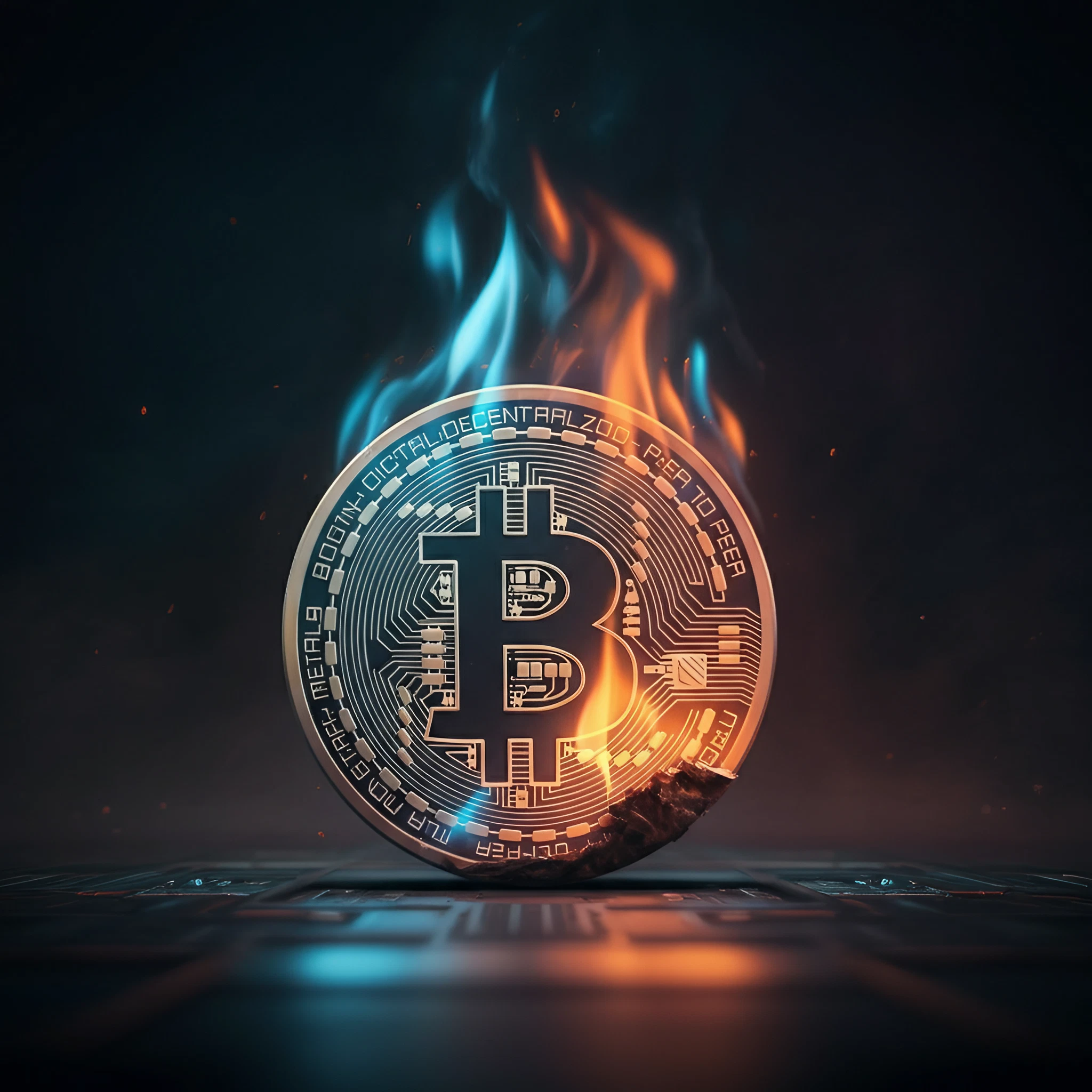Cryptocurrencies are at the forefront of innovation, constantly introducing new terms and concepts for investors to understand. One practice in the blockchain world that often sparks curiosity is crypto burning. But what does it mean when crypto is burned? Let’s break it down.
What Does It Mean to Burn Crypto?
Burning cryptocurrency refers to the process of permanently removing a certain number of tokens from circulation. This is achieved by sending the tokens to a burn address, also known as a “dead address,” which is a wallet from which the tokens cannot be retrieved or accessed. Think of it as locking the tokens in a vault and throwing away the key.
The aim of this practice is to create a deflationary effect, potentially increasing the value of the remaining tokens in circulation by reducing the overall supply. It’s a concept reminiscent of share buybacks in traditional finance, where companies buy back their shares to increase their value for shareholders.
How Does Crypto Burning Work?
Crypto burning is executed through the blockchain. Here’s how it typically happens:
- Burn Address Creation: A project establishes a burn address (a wallet with no accessible private keys). These addresses are transparent, and anyone can verify the tokens sent there.
- Token Transfer: Tokens are sent to the burn address in a publicly verifiable transaction, ensuring transparency.
- Supply Reduction: These tokens are now permanently out of circulation, reducing the total supply of the cryptocurrency.
For algorithmic stablecoins, burning can occur automatically via smart contracts. These contracts regulate the supply of tokens based on market demand, burning or minting tokens to stabilize their value (often pegged to a fiat currency like the U.S. dollar).
Why Do Cryptocurrencies Burn Tokens?
Burning tokens serves several strategic purposes in the crypto ecosystem. Here’s why projects choose to burn crypto:
1. Controlling Supply and Increasing Scarcity
The foundational economic principle of supply and demand is key here. When the supply of an asset decreases and demand remains constant or grows, the asset’s value typically increases. By burning tokens, crypto projects aim to mimic this principle to boost token value over time.
2. Rewarding Investors
Burns can indirectly reward token holders by increasing the scarcity and, potentially, the value of their tokens. This is similar to how stock buybacks work in the traditional market.
For instance:
- The Terra project burned nearly 89 million of its LUNA tokens, reducing its circulating supply by a staggering $4.5 billion in value at the time. This burn helped drive LUNA’s price to a record high days later.
3. Preventing Inflation
A consistent schedule of burns, often pre-programmed within a project’s code, reassures investors that the cryptocurrency won’t face issues like inflation or market oversaturation. This builds confidence, portraying the token as a store of value.
4. Boosting Utility and Governance
Some projects burn tokens as part of governance decisions, allowing the community to vote on how many tokens to remove and why. This process not only creates engagement within the project but also strengthens its tokenomics, aligning the ecosystem with community preferences.
5. Stabilizing Prices
For algorithmic stablecoins, burning is critical to maintaining their value peg. When demand outstrips supply, prices rise; burning tokens offsets this increase, maintaining stability and usability.
Does Burning Tokens Always Increase Value?
Not always. While the theory of reducing supply to increase scarcity makes sense, the outcome depends on various factors, including market conditions and investor sentiment. Here’s what you need to consider:
- Market Expectations: If investors already anticipate a token burn, they may “price in” the burn’s impact ahead of time, meaning the token’s price might not change significantly after the burn.
- External News: Events in the broader market or changes within the blockchain project can overshadow the effects of a burn.
- Long-Term Impact: While the price may not surge immediately, token burns are generally seen as a positive, long-term strategy to support asset value.
Real-World Examples of Crypto Burning
- Binance (BNB): Binance conducts regular burns of its native token, BNB, using an auto-burn system. This ensures that BNB’s circulating supply decreases over time, strengthening its demand and utility within the ecosystem.
- Terra (LUNA): One of the largest burn events involved Terra, which burned a significant portion of its supply as a governance decision—not just reducing token supply but also transferring value directly to holders.
- Shiba Inu (SHIB): The popular meme token SHIB has undertaken significant burn efforts to increase its scarcity and value over time, considering its vast initial supply.
Is Crypto Burning Good for Investors?
Whether or not crypto burning is “good” for investors depends on the burn’s implementation and the project’s overall goals. Here’s how it can benefit investors:
- Price Appreciation: If scarcity drives demand, the token’s value may rise over time.
- Strong Tokenomics: Burning tokens as part of the project’s structure can showcase thoughtful, long-term planning.
- Better Staking Rewards: If you stake tokens to validate transactions, the reduction in circulating supply could increase your rewards’ dollar value.
However, as with any investment, there are risks. Token burns are not a guaranteed way to increase value, and investors should always assess the project’s roadmap and community support.
Final Thoughts
Now that you know what it means when crypto is burned, you realize it’s more than just a flashy mechanism. Crypto burning is a strategic tool used by blockchain projects to manage tokenomics, drive scarcity, and stabilize ecosystems.
For investors, understanding practices like token burns is essential to navigating the fast-paced world of cryptocurrency. While burns can provide benefits such as potential price appreciation and reduced inflation, they’re just one factor to consider when evaluating your next crypto investment.
Curious to learn more about cryptocurrency and blockchain strategies? Stay informed and make smarter decisions!








